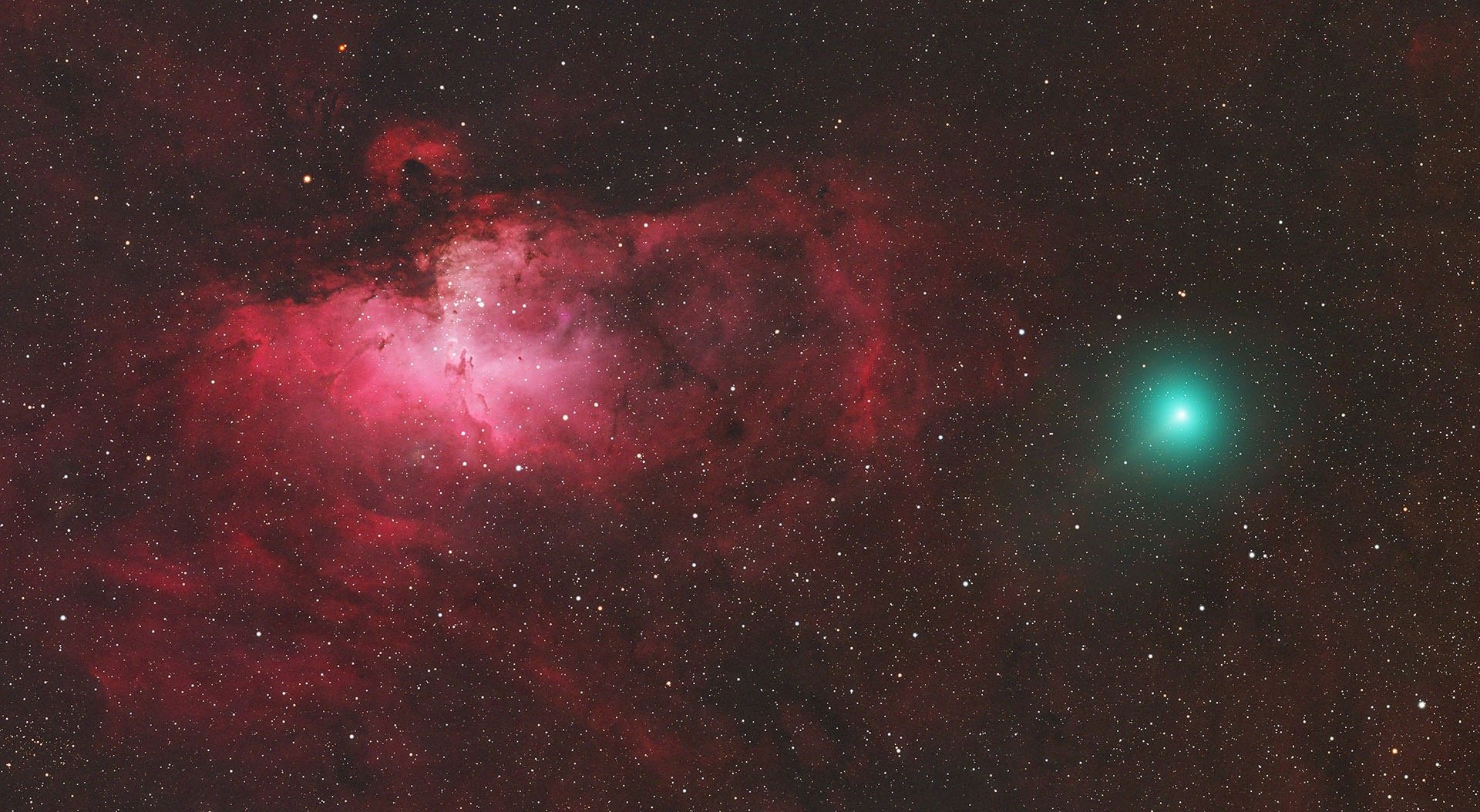Yes...working on astrophotography
Hello space enthusiasts! No updates for a while, but just wanted you to know that a lot is going on behind the scenes. I have had several imaging sessions in the backyard. Recent tree removal has opened up my skies quite a bit. I can now image to the celestial equator in the south. I have been experimenting with several filters on the modded Canon T5i. I am now upgrading my workflow with Pixinsight. Some of you may know, Pixinsight is quite intensive and the equivalent of Photoshop for the astrophotography community. So, much time is spent refining the workflow with filters and modded DSLR
I, also, just received a new imaging instrument from Astro-Physics! Hoping it is up and running by late winter/early spring.
So, a lot is going on behind the scenes. Hoping my Cave nebula comes together in the next few weeks. The imaging window for that object is coming to an end for the year. I have data on M78/Barnard’s loop as well as Cone Nebula. The DATA collection and image processing on these objects will go into late winter for sure.
Hope all is well with you and clear skies.
Happy New Year!
Staunton River Star Party 10/8-10/14
My schedule had me looking for a dark sky the weekend of 10/12. I have been pretty frustrated by the weather. You see September and October tend to be our prime astro-imaging weather in West Virginia. But hurricane remnants and clingy hot and humid conditions have ruined September.
Family obligations don’t permit me to visit the Calhoun County park no-frills party on 10/5 weekend. So, I began the search for another dark sky location.
Cloudy nights forums quickly revealed the Staunton River party as a potential destination. The reviews are glowing about the location and amenities. The sky is likely not as dark as Calhoun, but the amenities on the field are fantastic. Electric, round the clock food, other astronomers, beautiful location....all combine for what looks like a great event. Now all we need is the weather to cooperate.
Joon me at Staunton River for a great astronomical week.
Holding out for imaging weather
It has been a pretty frustrating two months. What is usually our prime time in astrophotography has seen heat and humidity with passing hurricane remnants. I am really holding out for nice conditions in October. My plan is to check out the Calhoun County Park in WV. The site is renowned for dark skies and is only 2 hours from my door. I am embarrassed to say I haven’t checked it out yet.
I have had the opportunity to test the AP Baader scope/SG-4 combination and it is working like a charm. I leave the scope and camera assembled in the carry case and simply attach it to the mount. Easily achieving pinpoint stars on the AP130 with 15 minute sub exposures.
I have also added some narrow band filters to the arsenal and plan on imaging a lot from my backyard. Currently planning on removing several hillside trees to open up below the celestial equator. Planning also for a NexGen dome in the backyard next summer. Also, a new scope has been purchased, but more on that later.
So, a lot is happening, just not imaging. The skies are simply too murky and humid, even for narrow band imaging. Many imaging projects are planned, hoping our weather breaks into a more early fall-like pattern soon.
Take care and clear skies!
Testing out some new gear
This past Thursday with full moon blazing, I tested out some new gear under pristine skies. I recently decided to revisit autoguiding. I have a few criteria to meet: no laptop and ease of use. You see I am old and come from the film days of ST-4 and my all time favorite the STV/efinder combination.
The SBIG SG-4 caught my eye since it requires no laptop in the field. One is necessary for initial focus on your guidescope, but as long as nothing changes with the scope/guider, just a click of the button and it guides away.
AP130EDTGF on APMACH1 mount with guidescope and SG-4 attached.
The guidescope selected is the Baader/AP guide rings combination for it’s promoted rigidity.
The additional ring support on the focused tube is why I went with the Baader/AP guidescope.
After initial setup of the SG-4 and focus achieved, I decided to also setup my Canon for first run with the Astronomic 12nm h-alpha filter. the goal was to begin collecting data on eastern veil.
Long story short, the SG-4 stores the XY calibration in the unit As long as the orientation of the SG-4/guidescope/mount remain constant, the SG-4 is always ready to guide with a click of the button
Here is the final part of the SG-4 calibration log. The most important part is the X+, X-, Y+, andY- movement in pixels and direction.
With the SG-4 calibrated and the Canon focused with the h-alpha filter, we are ready for a test run.
Here is a raw image at nearly 100% of the eastern veil nebula. It is a 15 minute auto guided frame. I did a simple polar scope alignment to begin the evening. I am very happy with the SG-4 in the backyard-the real test will come from a dark sky site.
100% crop of h-alpha eastern veil at ISO 1600 for 15 minutes with the SG-4/Baader/AP scope.
Easter Veil (NGC 6992)
Part of the Cygnus Loop, the Eastern Veil Nebula is one of the brighter sections of the loop and is visible in telescopes, especially with the aid of contrast enhancing filters.
Image acquisition: Taken with an AP130EDTGT and modified Canon T5i camera. 60 exposures of 2 minutes at ISO 1600 unguided were combined and processed in Pixinsight with final enhancement in PS CS. Taken during Greenbank Star Quest 2018.
Jeff's Blog
Join me on photography journeys from desert landscapes to deep sky wonders.























